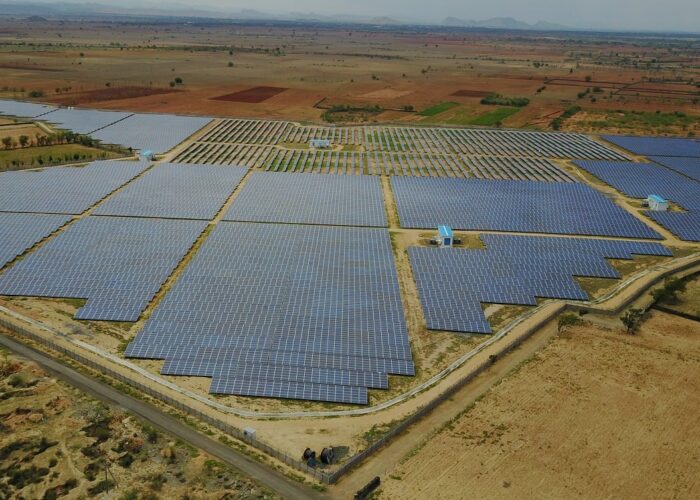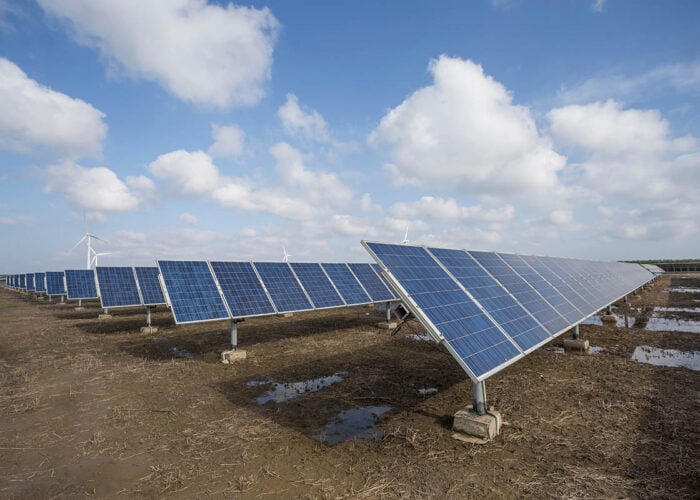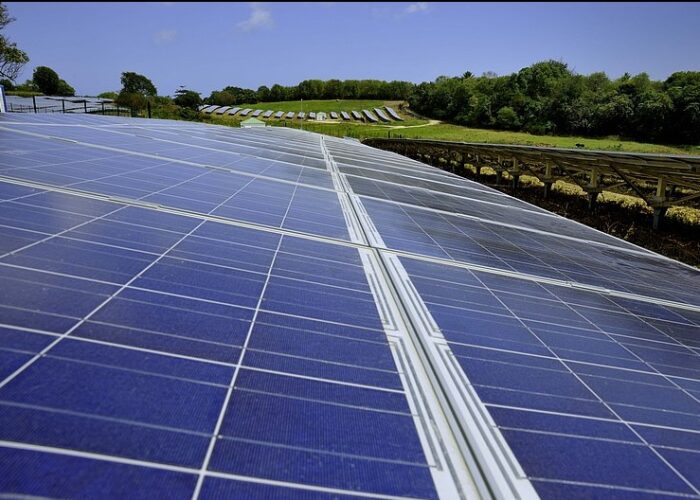The Solar America Cities Program was launched as one of the biggest efforts at the Department of Energy aimed towards the adoption of renewable energy in a country with one of the largest carbon boot prints in the world. The program, which saw partnership with 25 cities, made for a huge amount of success as 40 individual solar projects were eventually erected. The time has now come for the DOE to build on this success as it brings out a must-have resource for prospective cities: ‘Solar Power in Your Community: A Guide for Local Governments.’ Speaking with Charlie Hemmeline, head of the project based at the Department, I delved beneath the surface of the next stage of the Solar America Cities Program.
The Guide, now available on the Program’s website, builds on the DOE’s endeavour to take a long-term approach to help cities integrate solar policies in a leap towards carbon neutrality. Hemmeline explained to me that the guide would take all of the best practices from the 25 cities and put them together in a guide in order to educate and prepare prospective cities for the move into renewable energy. I was concerned however, that as he began to explain, there appeared to be no room for negative aspects in this guide. While this may seem like an odd element to expect in a ‘how-to’ guide, I think it is important to recognize less successful approaches, identify where they went wrong, and introduce best practices as a result of this. Nevertheless, I took on board what Hemmeline discussed about the report, and can certainly see its benefit to local governments.
Unlock unlimited access for 12 whole months of distinctive global analysis
Photovoltaics International is now included.
- Regular insight and analysis of the industry’s biggest developments
- In-depth interviews with the industry’s leading figures
- Unlimited digital access to the PV Tech Power journal catalogue
- Unlimited digital access to the Photovoltaics International journal catalogue
- Access to more than 1,000 technical papers
- Discounts on Solar Media’s portfolio of events, in-person and virtual
The first step towards the eventual goal of carbon neutrality for the DOE was to deliver praise to the 25 cities by awarding them with further funding to develop the existing efforts into much larger installations; the DOE has awarded 16 of the projects with additional funding for this. I began by talking to Hemmeline about this aspect of the DOE plans.
What funding is available for the development of the existing projects?
We began by discussing the amount of funding available to help the original cities build on what they had completed. For this the DOE has set aside a generous US$10 million from which awards from US$200,000 – US$1 million will go to projects dependant on the size and type. However the DOE will also be making an effort to encourage the R&D development in these cities – yet most of this will be targeted at industry and universities.
The purpose of the Guide
The first thing one notices about the Guide is that it is in no way specific. This points towards the fact that the first 25 didn’t have one definite policy that worked with more success than another. The Guide is therefore structured in a very broad manner, making it all-inclusive of a diversity of choices. “Every city is coming from a different starting place and they all have different characteristics, so in a sense it needed to be broad in order to cover all bases,” explained Hemmeline. This theme of variety and undefined options seemed to spread through the remainder of our conversation as we talked about installation type, size and the incentives available.
Installation Type
Hemmeline said that no city had pursued a technology specific strategy due to the often-implemented federal rules and regulations surrounding what kind of technology can be used. The Guide therefore focuses on the research element required for solar installations, looking at every single possible installation type, barrier and regulation. The Guide outlines that a local government must take the time to consider the permits required and amount it is eligible to install. For instance, in 2008, Boston Mayor Thomas Menino announced a goal of achieving 25MW of cumulative installed solar capacity in the city by 2015. To achieve this target, Solar Boston first conducted a rough technical feasibility analysis of the city’s rooftops. The Guide focuses very strongly on background research into what is possible in an area; it certainly cannot be criticized for lack of detail. It includes example cities such as Boston, which couldn’t simply erect an installation and reap the benefits without proper investigation. This element of the Guide is designed to introduce the governments and stakeholders to what amount of work they can expect, and what type of technology they will be using.
What about incentives?
Moving on to talk about the incentives available for those involved in this program, Hemmeline agreed that local governments should look into what state incentives are available and to make educated decisions based on this. Again, the Guide shows a great amount of detail on feed-in tariffs, loans, financing programs and tax incentives, among several other options. The issue with incentives at present is the state of the global economy. Due to this barrier, local governments will need to be fairly miserly when handing out incentives. This is something the DOE is backing, as it doesn’t want to scare the local authorities off solar policies by talking about large amounts of government gold that may be involved. The Guide is therefore aimed at helping the cities progress without having to use a lot of upfront resources.
What about installation size?
I thought I would ask more about the size of installations, as if there weren’t going to be any specifics in terms of technology type, or incentive, perhaps the size would be more particular. Hemmeline revealed that the DOE was in fact in the process of putting together a report on how much solar energy the 25 have actually produced from 2008-2009, as the local governments involved have been a little negligent when putting these figures together. This report would then establish the aim for new cities in terms of how big installations can be, and what amount of electricity they can expect to produce from this size. This information can be expected in the coming months.
Are there any industry specialists backing the program?
In terms of the PV industry’s involvement with this scheme, Hemmeline said, “The DOE has had a lot of interaction with companies through our research program, and there has been a lot of interest in terms of engaging with the cities.” However, “Cities were very clear that they didn’t want to be overwhelmed by companies that the Department had sent at them.” They are however looking for ways to gain valuable information from industry specialists’ interest and allow them opportunities to engage with cities that accept their input.
What would you say is the most important aim of the Guide?
The key point Hemmeline wanted to make when talking to me about this Guide is that the solar program is really trying to lay the groundwork for a massively expanding domestic solar market. “We’re doing that through our research portfolio that I think a lot of companies have seen. Through the Solar America Cities Guide we will help other institutional stakeholders, such as other governments, understand solar and play a part in the growing market and governments and institutions are doing all they can to support the industry.” This of course, is no easy task, which explains why it was so difficult for the Guide to focus on specific examples.
It seemed to me, after reflection, that this Guide is more about the general practice of setting up solar power in a community. Although the Guide clearly demonstrates the different options available to those interested in setting up solar in their city, building on the successes of the 25 case-studies, for me it needed to make more clear comparisons between what works and what doesn’t. The all-inclusive aspect of the guide is in one sense a benefit, as it can be utilized not only by cities in the U.S., but also destinations worldwide. However, this broad approach can also be seen as a hindrance, as some local cities’ governments may feel too overwhelmed by the amount of choice, and would rather be told – this is what works, this is what doesn’t and why.
As a closing question I asked Hemmeline if he thought that this guide would be a success in promoting solar energy across the country, “Overall the U.S. expects that solar will be cost competitive with conventional grid-supply electricity by 2015. Once this has occurred, lots more governments should want to get involved”, he said. “The main aim of the guide is to make sure that cities are prepared in advance of that date.”
The Guide is certainly an instrumental tool in doing this; that fact cannot be disputed. Yet it remains to be seen whether those who will actually implement the Guide share my opinion that it needed to focus more on the dos and don’ts in creating a solar city.
Hemmeline finished by saying, “It is in all of our interests to expand the use of clean energy and grow our clean energy economy. We want to provide local governments with the tools to do this by using the Solar America City Guide.” We certainly hope they succeed in doing this.
(Photographs courtesy of Solar America Cities website)






